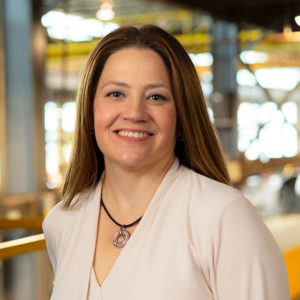Woman to Woman: Xerox names new female CEO
 by Liz O’Donnell (Boston)
by Liz O’Donnell (Boston)
On Thursday, May 21st, Xerox Corporation announced Ursula Burns, the current president of the company, will take over as CEO effective July 1 replacing current chief Anne Mulcahy. Mulcahy, who is retiring, will remain as chairman of the board. While Burns’ appointment may be business as usual inside Xerox, it is much bigger news outside of the technology company. This marks the first woman-to-woman CEO transition and Burns will be the first black woman CEO in the Fortune 500.
Inside Xerox, employees recognize Burns as a key member of the company’s leadership team. She has been with the organization for just under thirty years, starting as a mechanical engineering summer intern. During her tenure she has worked in a variety of roles from product development to planning. She led several business teams including the office color and fax business and office network printing business. In 2000, she was named senior vice president, Corporate Strategic Services, and in April 2007, she was named president. Her areas of concern include IT, corporate strategy, human resources, corporate marketing and global accounts.
Xerox employees might also be un-phased by the company passing the CEO torch from one woman to another woman. After all, Xerox is often recognized for its diversity. This year the Human Rights Campaign recognized the document management company as one of its 2009 Best Places to Work, based on “fair-minded and equal” workplace policies. Xerox was also ranked number 35 on The 2009 DiversityInc Top 50 Companies for Diversity® list and number one on The DiversityInc Top 10 Companies for Supplier Diversity. And, Xerox employees a full-time, executive diversity officer in Philip Harlow.
But outside of Xerox, Burns’ appointment is hardly status quo. It is historic. Currently, there are only four black CEOs at Fortune 500 companies. Burns will become number five, but again, she will be the first woman in that group. As far as women CEOS, currently, there are just 14 female CEOs in the Fortune 500. With the loss of Mulcahy and her replacement by Burns, that small percentage will remain the same. While the number of women at the helm is still very small, successions like the one from Mulcahy to Burns, two women who worked well together and supported each other, and firsts like Carol Bartz moving from one CEO position (Autodesk) to another (Yahoo) mark the progress women in business are making.
Burns was not available to comment on her appointment so one could only speculate how she feels about the significance of the move. Would she acknowledge how her role fits in to the big picture or would she prefer to focus on her accomplishments that earned her the top spot at Xerox?
If past comments are an indication of current thinking, the answer is probably both. At Fortune Magazine’s Most Powerful Women Conference last year Burns talked about the importance of valuing differences in the workplace.
“I struggle to stay exactly who I am. I actually pay a lot of attention to the stereotypes. Some of them are damn good.” She continues, “I think the big issue is not respecting the fact that everybody has a different place that they come from. If we worked hard to normalize everybody towards the corner office stereotype then I don’t understand what the purpose of having women lead versus having men lead is.”
“So I actually struggle hard to make sure that I don’t lose the fact that I’m from New York City, I’m black, I am a woman raised by a single mother who has a brother and a sister. I like all that stuff. I speak fast. All that stuff I like. …But if we threw it all out, I would not do this job. I would just not do it.”
Then, just a day after Xerox announced her promotion, Burns gave the commencement address at the Rochester Institute of Technology. “When I was at my own commencement back in 1980, being CEO of Xerox was probably the farthest thing from my mind. And I can assure you that no one at my commencement was pointing at me and predicting that I would become a CEO. Women presidents of large global companies were non-existent. Black women presidents of large companies were unimaginable.”
“The possibilities for each of you are also unimaginable. You are looking at all the proof you need that we really do live in the greatest country on earth. So dream big. Work hard. And all things are possible,” she told the graduates.




